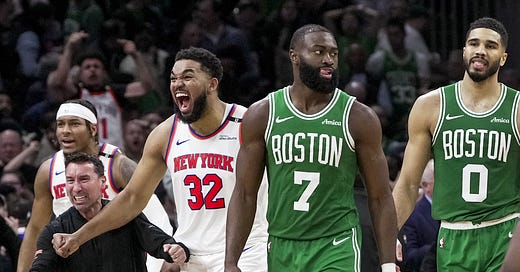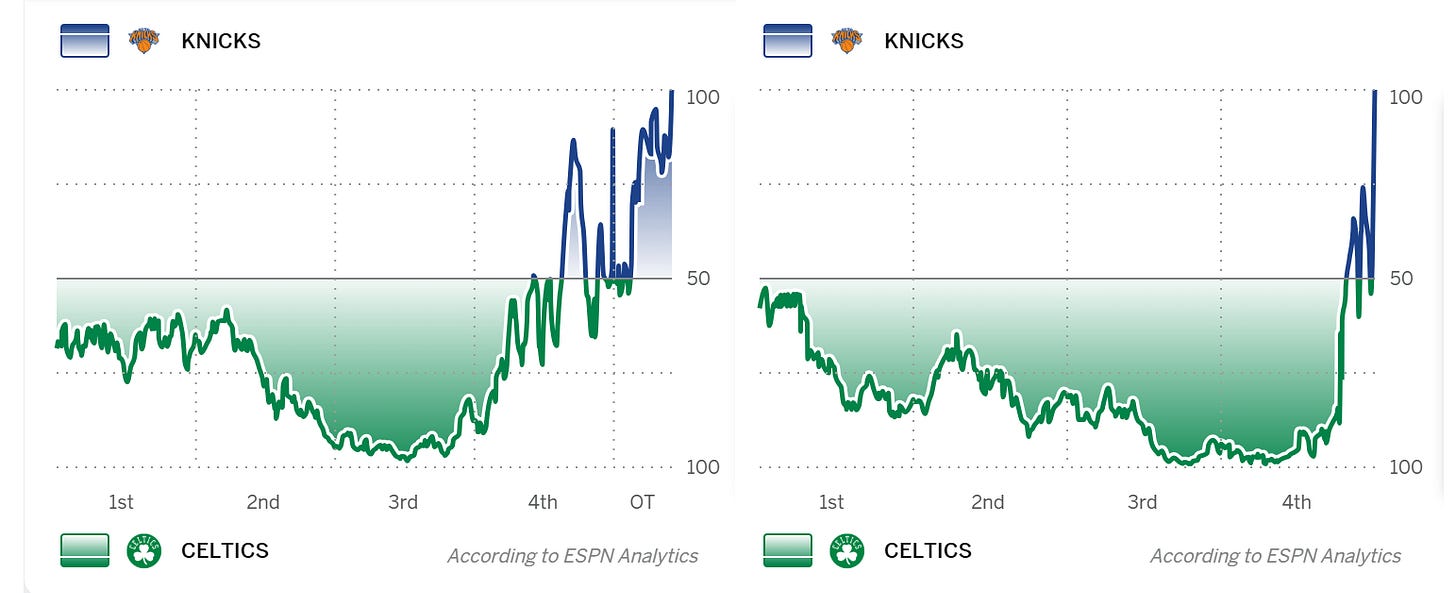The Celtics Are Having the Most Choke-Tastic Start to a Series in Modern NBA History
Boston has lost more late-game win probability than any team to begin a series in the modern era — and it might end up costing them everything.

One team’s incredible rally is another team’s massive choke-job, as it takes two to make history — and heartbreak.
So what were a remarkable pair of twin comebacks for the New York Knicks were also, simultaneously, a couple of crushing, inexplicable losses that the Boston Celtics basically gifted the Knicks to begin their second-round playoff series:
(The sensation of déjà vu between the two comebacks/collapses was so strong in Game 2 that I joked TNT was accidentally re-airing Game 1 on Wednesday night.)
All of which is to say that, whether you view it as the Knicks never giving up, chipping away at Boston’s leads and making the clutch plays — or the Celtics not working hard enough to get good shots late, bricking a ton of 3s and then learning nothing from the experience of Game 1 — these were a pair of historic changes in fortune at the start of a series.
How historic? For one thing, there’s this:
Same postseason! Much less the same series, much less the only two games we’ve seen of said series so far. But digging even deeper, I wanted to also look into the win probability numbers to quantify exactly how much of it Boston squandered in the fourth quarter and/or overtime of Games 1-2.
For this exercise, I’ll be looking at an NBA variation on my NFL quarter-by-quarter Win Probability Added (WPA) methodology, where I use a team’s pregame Elo ratings to create a point spread that is then used to dynamically generate win probabilities after each quarter of the game based on a combination of the game’s margin and the amount of time remaining in the game.1
Keep reading with a 7-day free trial
Subscribe to Neil’s Substack to keep reading this post and get 7 days of free access to the full post archives.





